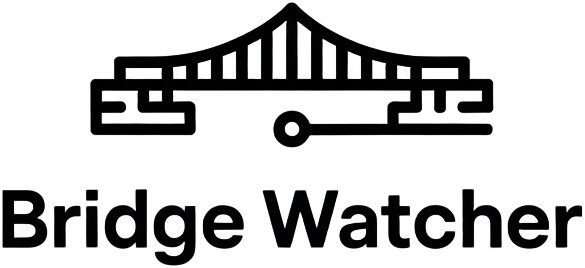
Cross-chain bridges are the connective tissue of decentralized finance, enabling assets to flow between blockchains and making true interoperability possible. But as DeFi grows, these bridges have become the single largest attack surface in the ecosystem. According to recent research, cross-chain bridge exploits now account for roughly 50% of all DeFi losses, totaling more than $2.5 billion in the past two years alone. This staggering figure isn’t just a headline – it’s a wake-up call for developers, investors, and everyday users alike.
Why Are Cross-Chain Bridges So Vulnerable?
Unlike single-chain protocols, bridges must interact with multiple networks, manage complex message passing, and often rely on external validators or oracles. Each added layer increases the attack surface. When you combine high-value assets with rapid innovation and sometimes rushed deployments, you get a recipe for disaster.
Let’s break down the seven most critical vulnerabilities that have repeatedly led to high-profile bridge hacks. Understanding these is key to both appreciating the risks and building safer systems.
The Seven Most Critical Cross-Chain Bridge Vulnerabilities
- Compromised Validator or Relayer Keys: Many bridges depend on a set of validators or relayers to sign off on asset transfers between chains. If even a subset of these keys is compromised – as seen in the infamous Ronin Network hack where five of nine validator keys were stolen – attackers can drain hundreds of millions in minutes.
- Smart Contract Logic Flaws in Bridge Contracts: Bridges are powered by complex smart contracts that handle locking, minting, and burning across chains. A single overlooked bug can let attackers mint unbacked tokens or bypass withdrawal checks entirely. The Wormhole Bridge exploit is a textbook example: a contract flaw allowed an attacker to mint 120,000 wETH worth over $326 million out of thin air.
- Insecure Cross-Chain Message Verification: Bridges rely on verifying messages from other chains – but if this verification process is weak or improperly implemented, attackers can forge messages that trick the bridge into releasing funds they never deposited.
- Replay Attacks Across Chains: Attackers can sometimes reuse valid transaction proofs from one chain on another if proper protections aren’t in place. This replay vulnerability allows them to double-spend or withdraw more than they deposited by exploiting message duplication across different networks.
- Centralized Bridge Operator Risks: Some bridges are operated by a small team or company holding privileged control over upgrades or emergency functions. If these operators act maliciously – or their credentials are compromised – user funds can be at risk without recourse.
- Insufficient Rate Limiting and Transaction Monitoring: Without robust controls on how much value can be moved within set timeframes (rate limiting) and real-time monitoring for suspicious activity, attackers can maximize damage before anyone notices something is wrong.
- Oracle Manipulation or Data Feed Exploits: Bridges often depend on external data feeds (oracles) to validate events across chains. If an attacker manipulates these data sources or exploits delays/outages, they can trigger unauthorized transfers or freeze funds indefinitely.
The Real-World Cost: Learning from Major Exploits
The scale of recent attacks makes it clear: these vulnerabilities aren’t theoretical. In March 2022, the Ronin Network lost over $600 million due to compromised validator keys – a stark reminder that even well-known projects aren’t immune (see our full incident analysis). Similarly, Nomad Bridge lost around $190 million after a smart contract misconfiguration allowed anyone to spoof valid withdrawals simply by copying transaction data.
This isn’t just about technical flaws; it’s about trust in DeFi’s foundational infrastructure. Without robust cross-chain bridge security practices and transparency around risks, every user who moves assets between blockchains faces exposure far beyond what they may realize.
A Closer Look at Each Attack Vector
Diving deeper into each vulnerability reveals just how nuanced (and preventable) many attacks are:
- If validator keys are stored on insecure servers or shared among team members without hardware protection, they become low-hanging fruit for hackers using phishing or malware attacks.
- Poorly audited smart contracts often contain edge-case bugs, especially when handling non-standard tokens or integrating new blockchains quickly to gain market share.
- Lax message verification opens doors for forged transactions, especially in fast-moving ecosystems where speed trumps security reviews.
- Lack of replay protection means old proofs can be used maliciously, especially during chain forks or network upgrades when state consistency is fragile.
- Centrally controlled bridges create tempting targets for social engineering, regulatory pressure, or insider threats that decentralized alternatives may better resist (read more about centralized validator risks here).
- No rate limits mean attackers can drain entire pools instantly rather than slowly over time, amplifying losses before emergency measures kick in.
- If oracle data feeds are manipulated via flash loans or network congestion attacks, critical decisions like asset unlocks may occur based on false information (explore top oracle-related vulnerabilities here).
The bottom line? Every one of these vectors has been exploited in real life – sometimes multiple times – because best practices weren’t followed from day one. In the next section we’ll explore proven mitigation strategies that leading teams are now adopting to secure their bridges against future threats. . .
Modern Mitigation Strategies: Securing the Cross-Chain Frontier
While the risks are daunting, the DeFi community is not powerless. Each of the seven critical vulnerabilities can be directly addressed with a combination of technical controls, operational discipline, and transparent governance. Here’s how leading bridge projects are raising the bar for cross-chain bridge security today:
- Compromised Validator or Relayer Keys: The gold standard is to use decentralized validator sets, where keys are generated and stored in secure hardware modules (HSMs) or multi-party computation (MPC) wallets. Rotating keys regularly and requiring threshold signatures (e. g. , 7-of-12) makes single-point compromise far less likely.
- Smart Contract Logic Flaws in Bridge Contracts: Rigorous audits, both internal and from reputable third parties, are essential before mainnet launch and after every upgrade. Formal verification tools can mathematically prove that certain classes of bugs are impossible, further reducing risk.
- Insecure Cross-Chain Message Verification: Adopting cryptographically sound message-passing protocols (like light clients or zk-proofs) ensures only valid cross-chain messages trigger asset transfers. This eliminates entire classes of forged message exploits.
- Replay Attacks Across Chains: Implementing unique nonces or chain-specific identifiers for every transaction proof prevents attackers from reusing valid proofs on multiple chains, a simple but powerful safeguard.
- Centralized Bridge Operator Risks: The move toward permissionless bridges, where no single party can pause, upgrade, or drain funds, is accelerating. Open governance models with on-chain voting add another layer of transparency and accountability (more on this here).
- Insufficient Rate Limiting and Transaction Monitoring: Dynamic rate limits based on real-time risk metrics (not just static thresholds) can halt suspicious flows instantly. Coupled with automated monitoring tools that alert responders to anomalies, this drastically reduces the window for mass exploitation.
- Oracle Manipulation or Data Feed Exploits: Relying on decentralized oracle networks instead of a single data provider reduces manipulation risk. Some teams now require multiple independent data feeds to agree before unlocking assets, raising the cost for would-be attackers dramatically (see more examples).
The most successful teams approach mitigation as an ongoing process rather than a one-time checklist. Security is never “done”: especially as new attack vectors emerge with each wave of innovation in blockchain interoperability.
The Path Forward: Building Trust Through Transparency
If there’s one lesson from DeFi’s bridge wars, it’s this: No bridge is too big to fail without proactive security measures. Users should demand transparency around audits, validator decentralization, and incident response plans before trusting any protocol with significant assets. Developers must treat every bridge deployment as a high-stakes event deserving rigorous peer review, not just a race to capture TVL.
The good news? Tools for real-time monitoring, anomaly detection, and automated emergency response are rapidly maturing (learn how monitoring helps here). Community-driven initiatives like bug bounties and open audit contests have already helped uncover critical flaws before they could be exploited in the wild.
The future of DeFi will be won by those who make security their top priority, not just after an exploit but at every stage of design, deployment, and operation. By learning from past breaches and embracing best practices today, we can finally unlock blockchain interoperability without sacrificing user trust or safety.






